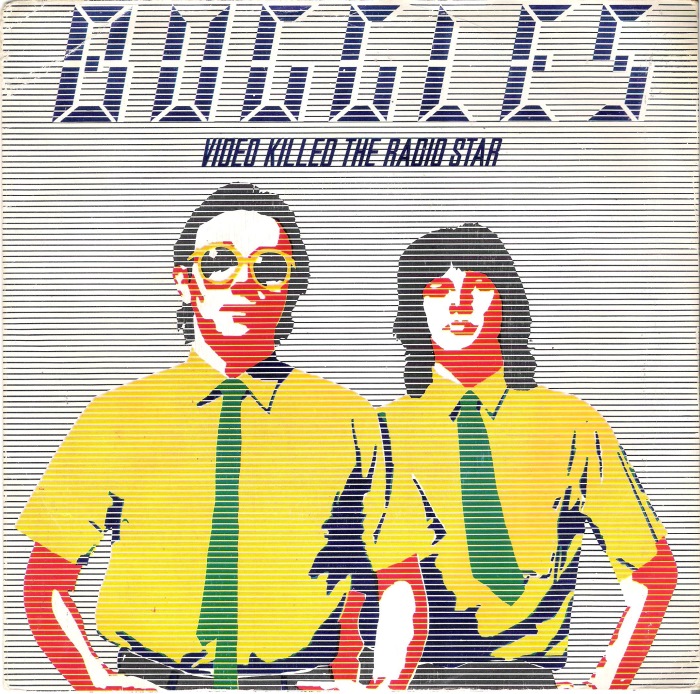‘Should we be creating a video podcast too?’ seems to be an increasingly common question we’re being asking by brands.
It might be a surprise though that video podcasts aren’t new, check out this Macworld ‘how to’ guide from 2006 – Apple had their own ‘vlog/vodcast’ section around the time YouTube launched (and we know who won that one). And of course, radio have been creating video clips of their shows for years.
But in the here and now, podcast listening apps are making it easier to consume video versions of podcasts, and whilst video is only currently available for select podcasts on Spotify, it cleverly allows listeners (we’ll keep referring to podcast consumers as listeners rather than viewers), to seamlessly switch between viewing and listening without missing anything.
And there’s YouTube of course, a 2019 study by The University of Florida/Futuri Media found that the platform was the most popular way of listening to podcasts (43% of podcast listeners).
All this means it makes sense that brands or independent podcasters don’t want to miss out on an opportunity.
But before you jump in and start filming, there’s a few things worth considering.
Audio-first
Of course we’d say that but if you’re filming your podcast sessions you’re essentially creating two separate pieces of content, which require two separate approaches, two separate skillsets, two separate strategies and most likely two separate budgets.

Podcasts are made for ears and the best ones are expertly produced and edited down to just the best content. So instead, unless you’re able to edit down your video footage to match your podcast it may make more sense to use the video to create bonus content clips which can be used as a promotional tool to attract listeners.
The other great thing about audio-only content is the conversation and one that the listener feels like they’re part of. The best conversations happen when they’re free-flowing, uninterrupted and feel personal and intimate, it’s quite easy for people to forget there’s a microphone in front of them, but place a camera and lights in the room and things naturally become a little more staged. And for the listener, that leads us to…
Escapism from the screen
We have to remember what’s made podcasts so appealing to people, most people who listen to podcasts are doing something else at the same time, like chores, taking a walk or commuting. There’s something about the audio experience that draws listeners into a conversation. Are they just as likely to sit through the same 45 minutes sat at a screen, and be listening as intently? Digital distraction is very real when you’re sat at a screen.
Where is your audience?
If you’ve spent years building a sizable audience on YouTube then it makes total sense to get your podcast in front of them. If you have a huge following on TikTok then you’ll be missing a trick if you fail to use that platform to share the podcast content.
It’s up to you to decide what format your audience going to enjoy best, if you know they usually sit through long videos on YouTube then a full video version of your podcast may well be the way to go, but if they love bitesize content then short highlight clips from the podcast, or even ‘behind the scenes’ video clips might be a more effective way to share your podcast content.
What sort of podcast are you creating?
Sometimes the content is just a natural fit for a video podcast. For instance, take TED Talks Daily – video podcasts are a great way of sharing their already highly produced content, and because the talks are so well written, they work almost just as well if you’re only listening (and perfect for Apple and Spotify’s video podcast viewing experience). For other podcasts, like those which are more heavily scripted, have an intricate storyline or feature interviews with different people, to re-create that in video form is a non-starter.
We talk a lot about finding the right podcast format for your brand and your audience. For many that’s an interview or multi-guest chatty format, so what about those? Some studios now are set up with cameras and (thanks to the pandemic) remote recording platforms (like Riverside.fm, Squadcast and Zencastr) can all record high-quality video. So if you’re keen to capture that footage, first have a think about the best way of using that content, whether it’s a separate video edit of the show or bitesize, sharable clips for social media.
Be strategic
The most successful branded podcasts or corporate podcasts have solid strategies behind them, they’re often part of a bigger content picture. Once you know how your podcast fits into that bigger picture you’ll be better placed to answer that question of ‘Should I be filming my podcast?’
Think of your podcast like a content farm from which little seedlings of related content sprout to take on a life of their own elsewhere
Having a regular podcast covering engaging topics and featuring interesting guests is one of the best ways of creating content to use across all of your channels. Think of your podcast like a content farm from which little seedlings of related content sprout to take on a life of their own elsewhere; blog posts, video snippets, quotes for social feeds or highlight videos for YouTube. And at the same time you’re opening up your podcast to brand new ears too.
So, ‘Should we be creating a ‘video podcast’?’
Possibly not in the sense of a carbon copy of your podcast, but so long as quality isn’t being compromised, and with the right strategy in place, you could get be making all your podcast hard work, work a lot harder for you!
We’d love to chat more about developing a podcast strategy that works for you and your audience. We’ve produced some awesome branded podcasts for some really great clients. Get in touch!